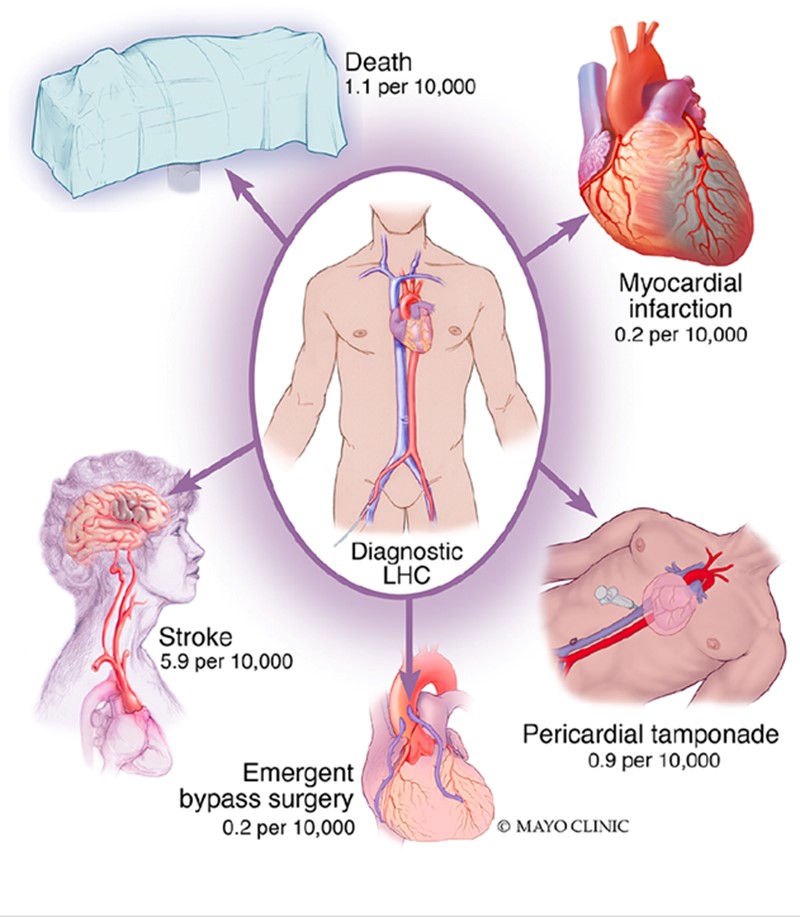Cardiac Catheterization Complication and Nephropathy
Mustafa Mohamed Ali Hussein,*
Department of Clinical Medicine, Medical and Cancer Research Institute, Sudan
Received Date: 26/03/2021; Published Date: 07/04/2021
*Corresponding author: Mohin IJ, Department of Clinical Medicine, Medical and Cancer Research Institute, Nyala,Sudan
Cardiac catheterization is one of the most commonly performed cardiac procedures, it used to refer to either left or right cardiac catheterization or both, in any invasive procedure, an expected complication may be related to patient or procedure-related complications, through years of using this technique, significantly reduced rate of complication occurred due to improved skill of the operators, and new techniques. The procedure can be either therapeutic or diagnostic, and intervention determined by a cardiologist depending on the clinical need. It used for the treatment and evaluation of various cardiac conditions such as coronary artery disease, left ventricular function evaluation, congenital heart diseases assessment, heart failure evaluation, myocardial and pericardial disease assessment, treatment and evaluation of cardiac arrhythmias [1].
The complication rate is multifactorial for any patient depends upon, co-morbid conditions, vascular anatomy, clinical presentation, the way procedure bring performed, and the operator experience and skills. There is a range widely complication, from minor problems such as discomfort at the site of the procedure to life-threatening situation and events that may lead to irreversible damage. However, given the above consideration, the major complication is uncommon, it occurs in less than 2% of the population, and Diagnostic cardiac catheterization has major complication usually less than 1%, while mortality risk of 0.05% [2], even in the critically ill patient, the procedure can be performed successfully when clinically indicated. approximately 10-15% of patient develop acute kidney injury after coronary interventions, combined factors may lead to developing AKI, atheroembolic kidney disease, ischemic injury to the kidney due to hemodynamic instability during the procedure, cardiac catheterization released AKI not only increase the duration of hospital stay but also shorts and long-term mortality complication [3]. Contrast-Induced Acute Kidney Injury (CI-AKI) is a serious potential complication during coronary angiography, it defines as an increase in serum creatinine 25% above the baseline value or ≥ 0.5 mg/dl, such increase has clinical significant outcomes, such as irreversible renal impairment requiring hemodialysis, and death [4].

Figure 1: Deaths occurring post-diagnostic LHC procedures were secondary to acute illness rather than directly related to diagnostic procedure.
References
- Manda YR, Baradhi KM. Cardiac catheterization, risks and complications. 2018.
- Tavakol M, Ashraf S, Brener SJJGjohs. Risks and complications of coronary angiography: a comprehensive review. 2012; 4(1): 65.
- Ram P, Horn B, Lo KBU, Pressman G, Ranga swami JJCcr. Acute Kidney Injury Post Cardiac Catheterization: Does Vascular Access Route Matter? 2019; 15(2): 96-101.
- Gami AS, Garovic VD. Contrast nephropathy after coronary angiography. Mayo Clinic Proceedings; 2004: Elsevier.

